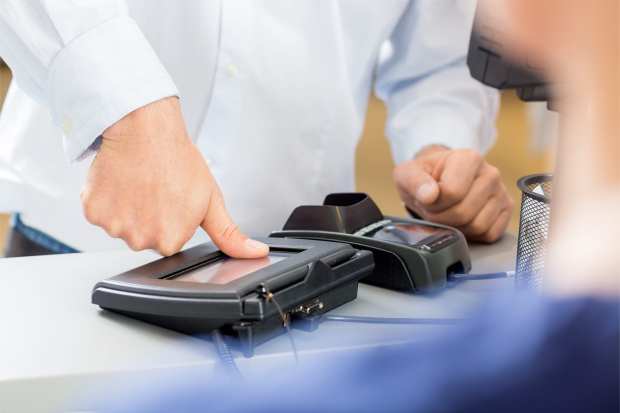Retail Poised To Embrace New Biometrics As Innovation Heats Up

Can a person’s ear serve as one of the next frontiers of retail innovation? It might not be as far-fetched as it seems.
News has recently emerged that a computer scientist has developed what Geek.com called a “novel way of unlocking your phone,” which, in turn, could one day find its way into retail uses as a new form of biometric authentication.
The “tool … uses modified wireless earbuds to authenticate smartphone users via the individual geometry of their ear canal.” After all, the publication noted, “the ear canal produces a particular signature based on how sounds echo or are absorbed inside it.” More specifically, “when a sound is played into someone’s ear, it propagates through and is reflected and absorbed by the ear canal. This process produces a unique signature that can be recorded by a microphone.” The process could be used, say, for situations involving mobile payments, which every year cover more retail situations.
Biometrics of all forms promise to take a bigger role in retail in the 2020s, either via payments or authentication or other ways.
China Example
Take one recent example out of China.
Alipay will soon add beauty filters to its facial-recognition payment systems all across China, according to reports. Chinese consumers are among the most avid users of beauty filters on messaging apps, and also the third-largest users of plastic surgery. The initiative is called “Smile to Pay” and Alipay is hoping that it will boost usage among female users. Alipay announced it was adding the filters after a poll in the country showed that 60 percent of people felt ugly when they scanned their faces into facial recognition technology. Less than 10 percent said they think they look the same, and 27 percent said they were more worried about the payment function than how they looked on the screen.
Amazon is part of this trend as well. It is reportedly testing a biometric payment system with a handful of customized vending machines for employee use — this time, via their hands. The system doesn’t require a “hard touch” — consumers do not have to lay their hand down on the scanner — instead, the consumer waves a hand over the device which then uses a combination of computer vision and depth geometry to identify the customer and connect to their card on file.
Other Players
Amazon is not the first player that has made this attempt in the world of retail. It isn’t even the first (or second or third) to attempt to roll out biometric payments in the world of grocery retail. It’s been tried, quite a few times and in a few forms over the last decade and a half, usually to a similar outcome. The product rolls out with much fanfare and sticks around for a little while — before quietly creeping off, never to be heard from again.
A variation on this theme that has been gaining traction in the U.K. doesn’t use the fingerprint. Instead, it uses a harder to map (and harder to steal) infrared scan of the vein pattern in a consumer’s fingertips. The firm associated with this biometric payment method — Fingopay — has been slowly but surely gaining traction within the U.S. since 2017 and has started to gain traction in the grocery, stadium and hospitality segments.
On the upside, Fingopay does seem to have a better accuracy reading than that of its fingerprint-running forebears. But it, too, has seen slow adoption, according to reports. Because the system needs to log how blood is pumping within the system, users report that lining up their finger on the sensor and holding it still is often a slower process than just dipping or tapping a card.
Whether via hands, ears or other parts of the body, biometrics hold increasing promise for more use in retail, though the road to success and mainstream acceptance is still long.
